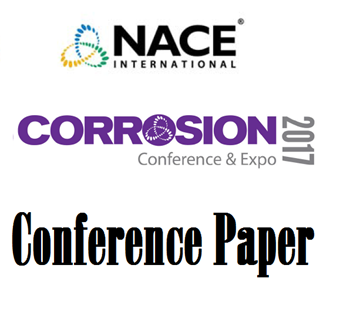
Available for download
Product Number:
51324-21016-SG
Author:
Shigekazu Miyashita; Shunji Kataoka
Publication Date:
2024
$40.00
The mechanical properties of piping materials in gaseous hydrogen environments are still a complex subject, although steel pipelines have been a major means of transporting gaseous hydrogen for decades. An assessment of the material performance in gaseous hydrogen environments is necessary for safe and reliable pipeline design and operation, not only for existing pipelines but also for new pipelines needed to accommodate future consumption demands. Since the materials for hydrogen pipelines are usually subjected to the repeated loading of pressure fluctuations, fatigue crack growth in steels in gaseous hydrogen is of paramount concern. In this paper, the current understanding of the effects of hydrogen on fatigue crack growth are reviewed. In particular, the effects of various parameters, such as steel grade, loading frequency, stress ratio, and hydrogen partial pressure are discussed in detail. Moreover, fatigue crack growth analyses in hypothetical hydrogen pipelines using a fatigue crack growth model developed by the Institution of Gas Engineers and Managers (IGEM) are presented. These analyses are used to assess the applicability of conventional pipeline steels, and their results indicate certain technical challenges for the industry.
We're sorry, something went wrong.
We are unable to complete this action. Please try again at a later time.
If this error continues to occur, please contact AMPP Customer Support for assistance.
Error Message:
Please login to use Standards Credits*
* AMPP Members receive Standards Credits in order to redeem eligible Standards and Reports in the Store
You are not a Member.
AMPP Members enjoy many benefits, including Standards Credits which can be used to redeem eligible Standards and Reports in the Store.
You can visit the Membership Page to learn about the benefits of membership.
You have previously purchased this item.
Go to Downloadable Products in your AMPP Store profile to find this item.
You do not have sufficient Standards Credits to claim this item.
Click on 'ADD TO CART' to purchase this item.
Please review your transaction.
Click on 'REDEEM' to use your Standards Credits to claim this item.
You have successfully redeemed:
Go to Downloadable Products in your AMPP Store Profile to find and download this item.

Available for download
Product Number:
51317--9402-SG
ISBN:
9402 2017 CP
Author:
Kathy Zhang
Publication Date:
2017
$20.00
We're sorry, something went wrong.
We are unable to complete this action. Please try again at a later time.
If this error continues to occur, please contact AMPP Customer Support for assistance.
Error Message:
Please login to use Standards Credits*
* AMPP Members receive Standards Credits in order to redeem eligible Standards and Reports in the Store
You are not a Member.
AMPP Members enjoy many benefits, including Standards Credits which can be used to redeem eligible Standards and Reports in the Store.
You can visit the Membership Page to learn about the benefits of membership.
You have previously purchased this item.
Go to Downloadable Products in your AMPP Store profile to find this item.
You do not have sufficient Standards Credits to claim this item.
Click on 'ADD TO CART' to purchase this item.
Please review your transaction.
Click on 'REDEEM' to use your Standards Credits to claim this item.
You have successfully redeemed:
Go to Downloadable Products in your AMPP Store Profile to find and download this item.

Available for download
Product Number:
51323-19188-SG
Author:
Nathaniel G. Sutton, Phillip E. Prueter
Publication Date:
2023
$20.00
We're sorry, something went wrong.
We are unable to complete this action. Please try again at a later time.
If this error continues to occur, please contact AMPP Customer Support for assistance.
Error Message:
Please login to use Standards Credits*
* AMPP Members receive Standards Credits in order to redeem eligible Standards and Reports in the Store
You are not a Member.
AMPP Members enjoy many benefits, including Standards Credits which can be used to redeem eligible Standards and Reports in the Store.
You can visit the Membership Page to learn about the benefits of membership.
You have previously purchased this item.
Go to Downloadable Products in your AMPP Store profile to find this item.
You do not have sufficient Standards Credits to claim this item.
Click on 'ADD TO CART' to purchase this item.
Please review your transaction.
Click on 'REDEEM' to use your Standards Credits to claim this item.
You have successfully redeemed:
Go to Downloadable Products in your AMPP Store Profile to find and download this item.




